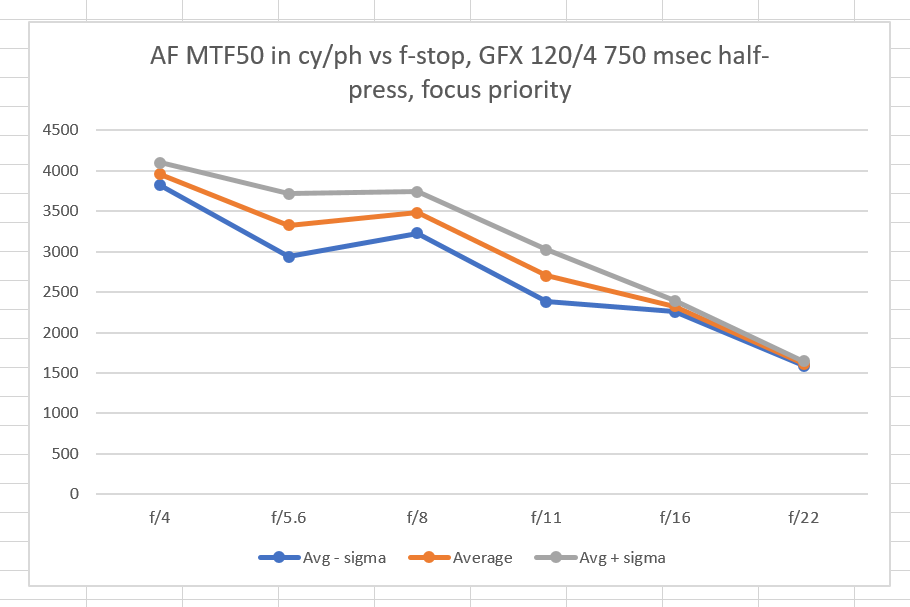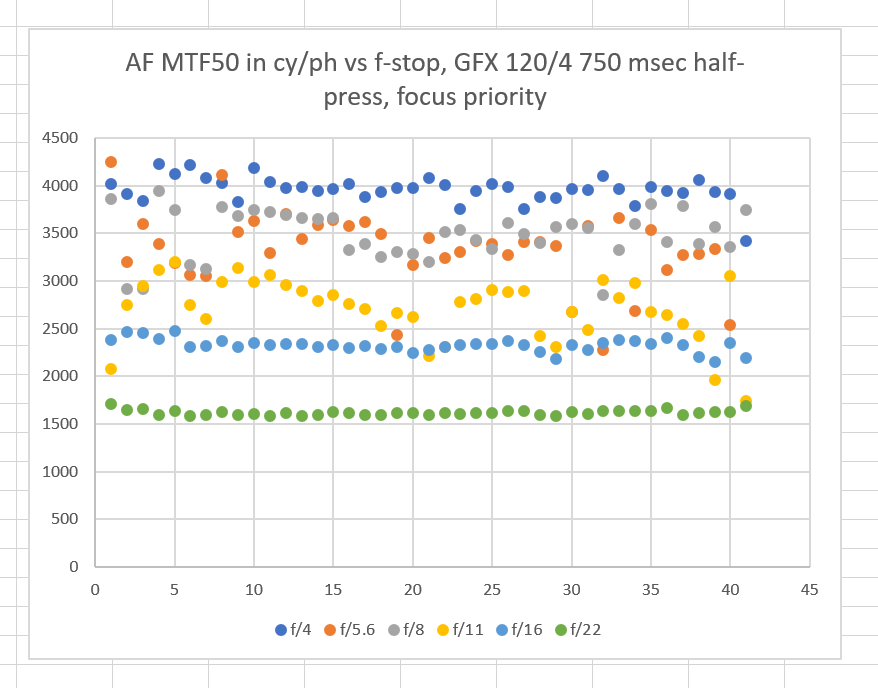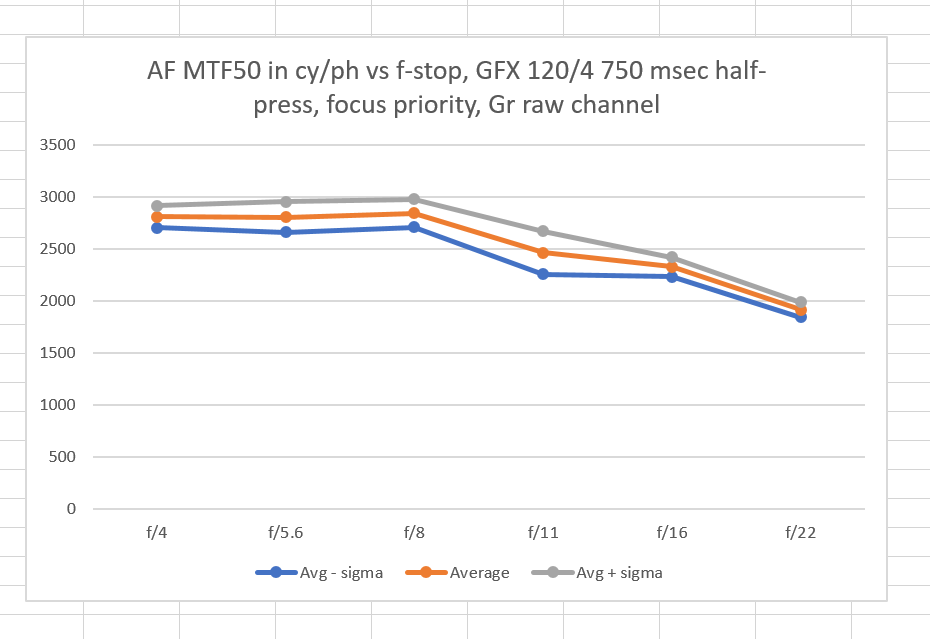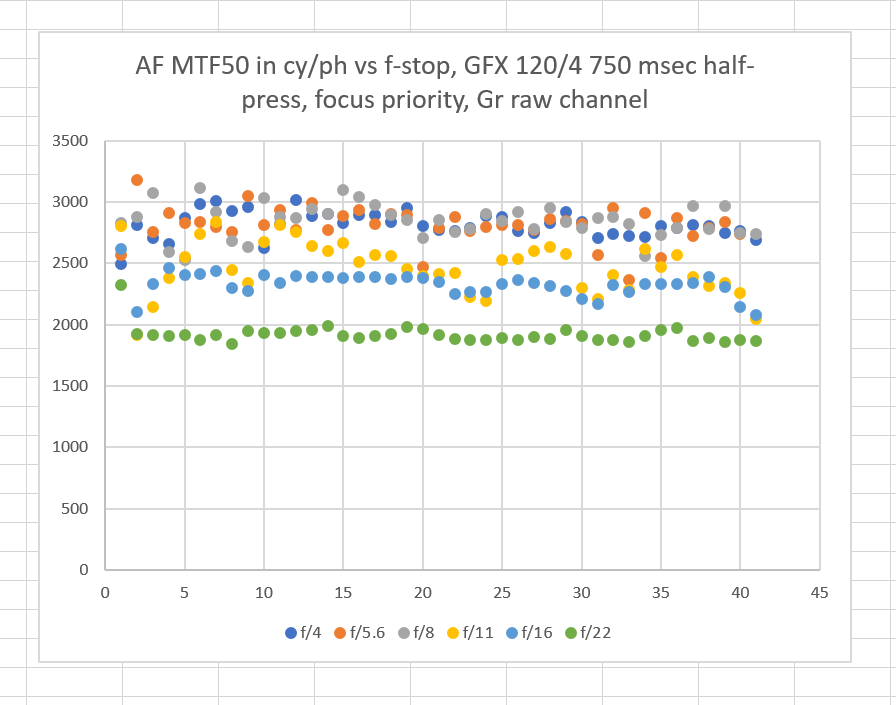This is the 33rd in a series of posts on the Fujifilm GFX-50S. The series starts here.
I repeated yesterday’s auto focus tests with the Fuji 120 mm f/4 macro lens instead of the 63. Here are the results:
First of all, a word of explanation for numbers you’ve probably never seen before. Yes, you are reading the curves right. At f/4 through f/8, the MTF50 (shown in cycles per picture height) of this lens is beyond the Nyquist frequency of the sensor! That’s because we are using Lightroom’s default sharpening. With no sharpening, that wouldn’t happen.
Second, we see the same kind of anomolous behavior when the lens is stopped down a bit. In this case, it looks like only f/5.6 is materially affected, but f/5.6 shouldn’t be lower than f/4 on average.
If we look at the raw data for the 41 exposures at each f-stop, you can see that something systemic seems to be affecting the f/5.6 results. With two exceptions, they are worse than the f/4 average results.
If we look at one of the green raw channels, the spread is not as great, but we don’t see the increased resolution at f/5.6 that should be there:
I don’t know what’s going on in Lightroom to add noise to the results at f/5.6 and f/8. The reason the raw MTF50’s are lower is that Lightroom sharpens as it demosaics.
For completeness, here is the sequence data for the first green raw channel:
Here are the test conditions:
- ISO 100.
- 5000K illumination, bright enough so that the f/2.8 exposure was 1/320 second
- Target distance 3 meters
- AF focus/release/priority: focus
- Rapid AF: off
- Pre-AF: off
- AF-S
- 117 AF point mode, center point chosen, default size.
- EFCS on
- Lens set to C mode, and aperture controlled from the camera
- Shutter set to A mode.
- + 2/3 stop exposure compensation
- Pre-release half-shutter depression time: 750 milliseconds
- Shutter release full depression time: 250 milliseconds
- Camera moved 4 mm between exposures over a total range of 0 to 160 mm (40 moves, 41 exposures per stop)
- Camera motion applied by Cognisys focusing rail, with 1250 msec post-move settle time
- Shutter timing does by the same Cognisys controller
- RRS heavy-duty legs
- Arca-Swiss C1 head
See the previous post for more information about the test methods




[…] The Last Word – Fujifilm GFX with 120/4 AF accuracy […]